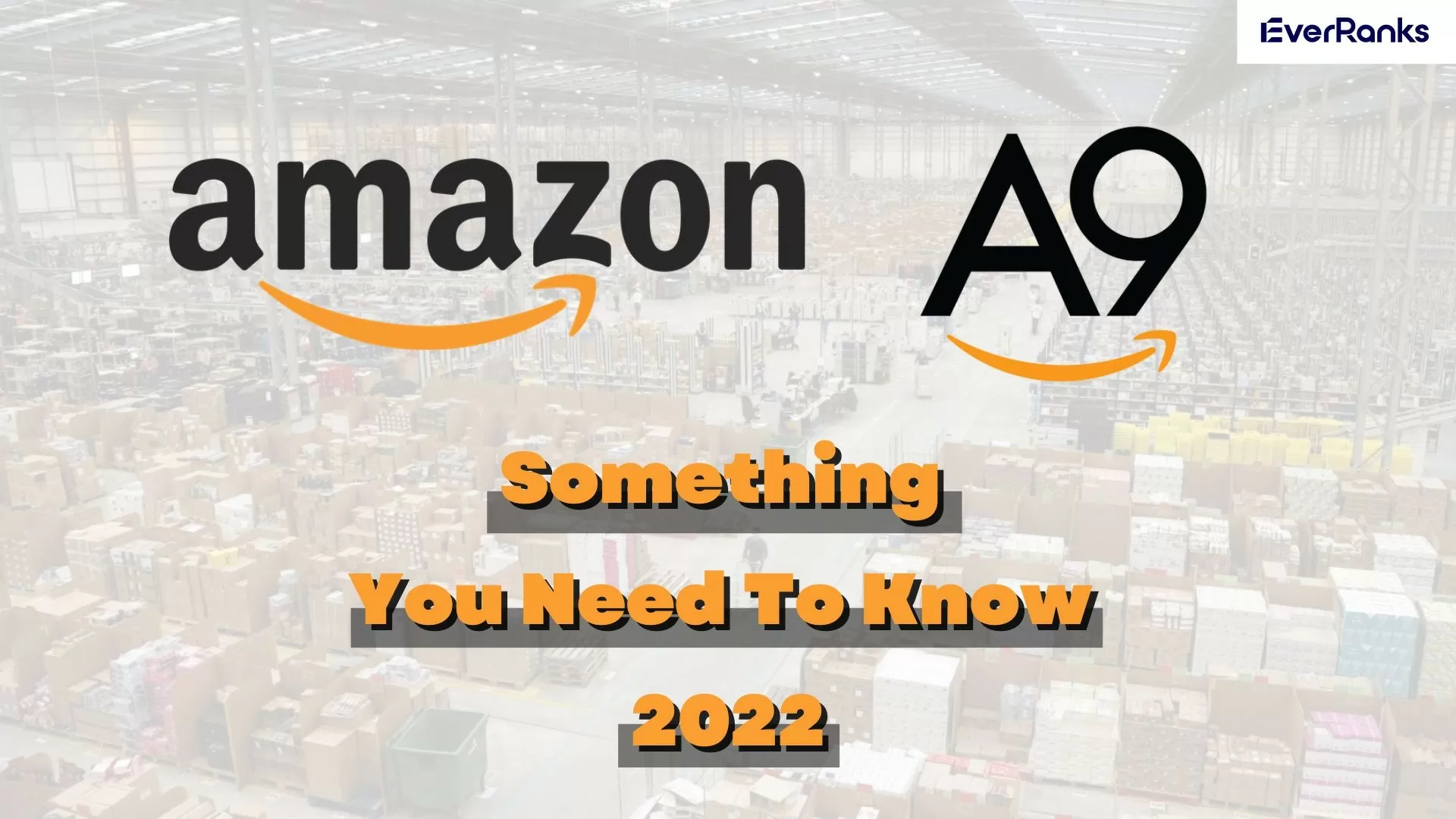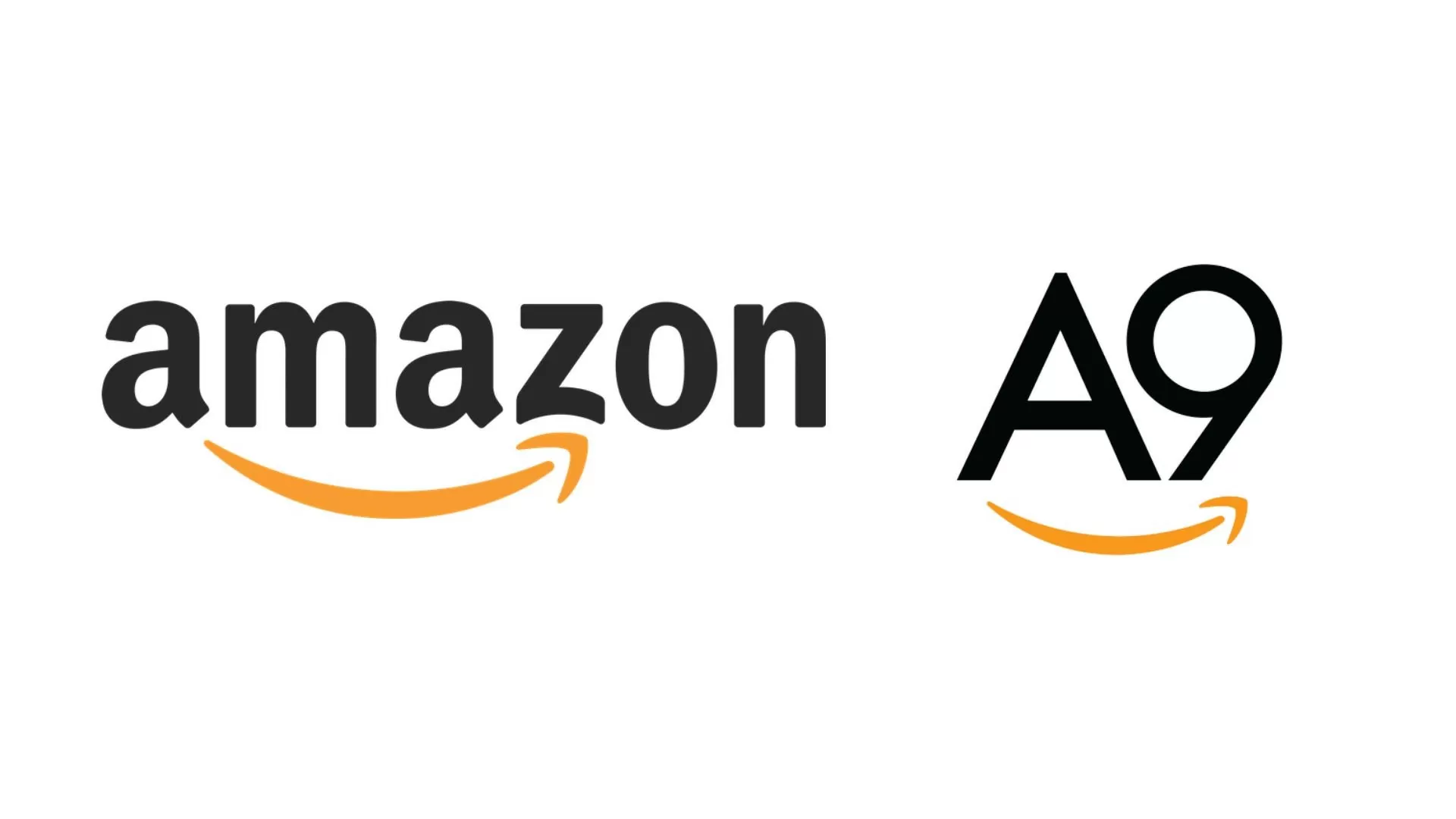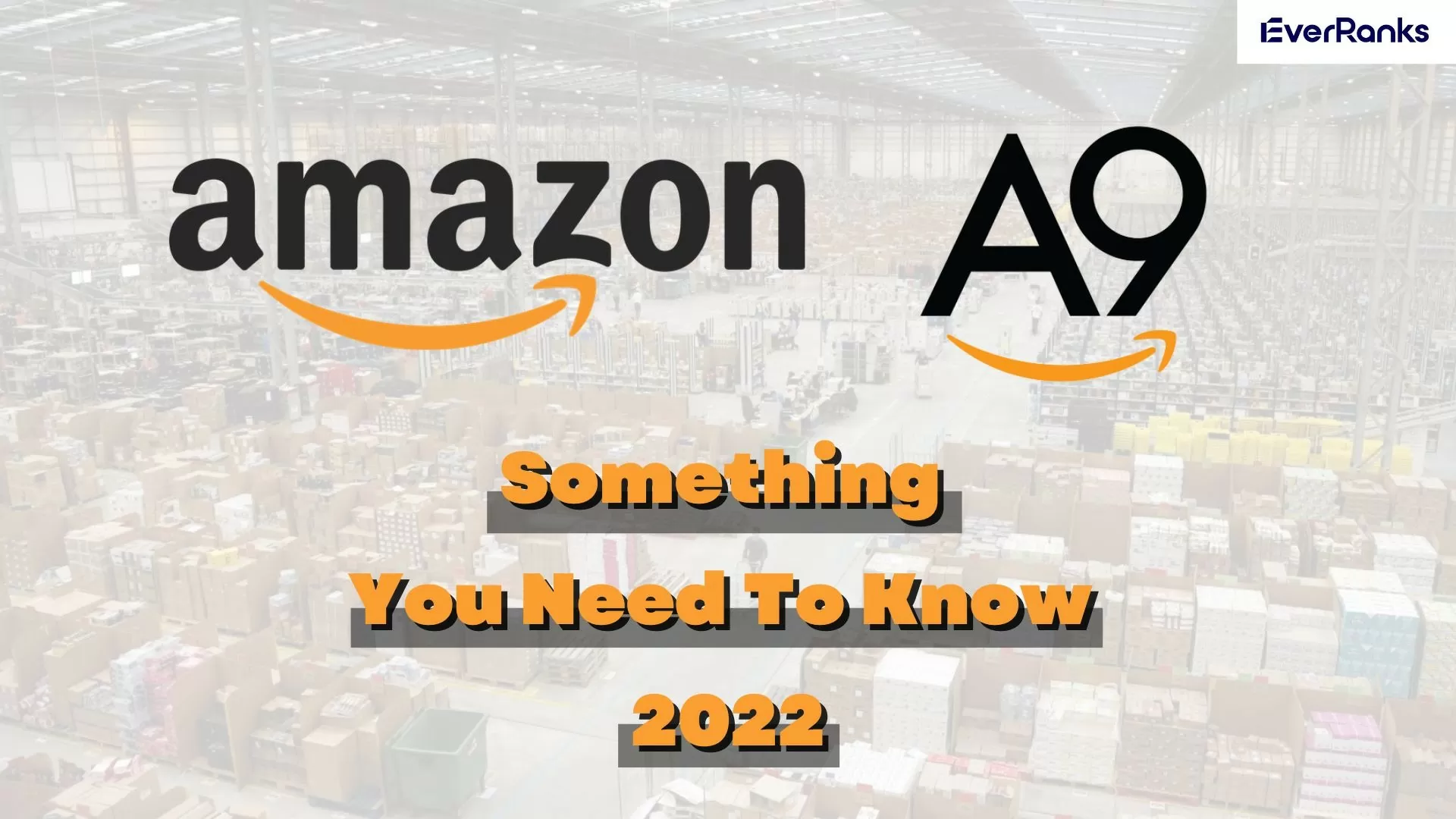Whether you are an established seller or a newcomer looking to break into the e-commerce industry, chances are you don’t know everything there is to know about the Amazon A9 algorithm.
Understanding how the algorithm works allows you to rank highly in Amazon searches, which is the most effective way to drive traffic to your listings and, ultimately, sales. Effectively implementing algorithm-optimized techniques and strategies can result in exponential growth for your company.

Let’s go over the Amazon A9 Algorithm, what factors the algorithm looks for, and how to rank your products higher on Amazon in this article.
What is the Amazon A9 Algorithm?

Amazon’s A9 Algorithm is the system that determines how products are ranked in search results. It is similar to Google’s search algorithm in that it takes keywords into account when determining which results are most relevant to the search and thus which are displayed first.
There is one significant difference between Google and Amazon’s algorithms: the A9 algorithm places a strong emphasis on sales conversions as well. This is because Amazon is a business with a vested interest in promoting listings that are more likely to result in sales. As a result, Amazon will prioritize listings with a strong sales history and a high conversion rate.
This has a cumulative effect: higher-ranked products are more likely to receive more traffic and thus have a better chance of achieving high sales. As a result, their ranking will rise, and so on. However, optimizing the listing for conversions is a critical component of this equation.
10 Amazon SEO Checklist For Optimization of Your Online Shop 2022
The Importance of Keywords

Keywords are one of the most important factors Amazon considers when determining the relevance of search queries and, as a result, ranking them on its results pages. As a result, it is critical to include high volume and, more importantly, relevant keywords in your listings.
Make sure to only use keywords that are relevant to your product; it’s pointless to appear in search results for customers who are looking for something else.
You might also consider relevant, lower-volume keywords with less competition. In some cases, ranking first for a search term with a low volume of searches may be more advantageous than ranking second for a search term with a high volume of searches.
How to Integrate Keywords
Once you’ve determined the best keywords for ranking your product listing, you must employ them strategically. This comes down to how you write your listing’s title: you want to include as many keywords as possible while still ensuring that the title reads well rather than being an incoherent jumble of keywords.
Long-tail variations of your primary keywords, with “connector” words in between, are also a good idea. To improve readability, use pipes and dashes to separate the keywords. Finally, an optimized product title should use keywords to highlight the main benefits of the product.
The Importance of Sales Conversions

Achieving a high sales conversion rate is an important part of any strategy for ranking high in Amazon’s algorithm, as well as for the overall success of your business strategy. Sales conversion rates are one of the most important factors Amazon considers when determining high-ranking products, as these are the listings that are most likely to generate revenue for them. Increasing your sales conversions will therefore drive more traffic to your listings through higher rankings, which is beneficial to your business!
Performance Evaluation and Rankings
It doesn’t stop there once you’ve created a product listing that is optimized for both keywords and sales conversions. It is critical to regularly monitor the performance of your listing to see how it ranks and make any necessary adjustments or improvements.
Tracking keywords on Amazon will tell you how well your keywords are ranking your products. Understanding how Amazon’s A9 algorithm works and how to optimize your listing can help your business grow by increasing conversions and driving more traffic.
How Amazon A9 Search Algorithm Works?
Amazon’s search engine and algorithms determine which items are the most optimal matches with the customer’s query and then score them based on the item’s level of relevancy to the consumer to perform a search at scale.
To adapt to what is most important to customers, Amazon’s ranking algorithms automatically learn to combine multiple relevance features and analyze past search patterns. As a result, the A9 search algorithm is based on two fundamental principles: performance and relevance. A product with a strong sales performance history, as well as one that uses the right keywords to effectively match a customer’s search queries, will rank higher in Amazon’s search results. Keep these two factors in mind when optimizing your Amazon product listings to increase your chances of higher organic rankings.
What factors does Amazon’s Algorithm consider?
The A9 Algorithm takes into account several different factors. The algorithm is always learning and evolving. Conversions inform Amazon that the product purchased is precisely what the buyer searched for.
The more conversions your listing receives, the more likely it will rank for relevant keywords.
Amazon SEO: Get your products to rank high on Amazon search

Keyword relevance
Amazon cannot rank you for a product if they do not know what it is. The keywords in your listing assist Amazon in determining what your product is and what it does.
If Amazon believes your product is relevant to a customer’s keyword search, it will appear higher in the search results.
One of the most important aspects of your Amazon product detail page is keywords. Customers will not find or purchase your product if you do not use the appropriate keywords.
Tips For Making A Great Small Business Website In 2022
Zero Search Volume Keywords Targeting Is Being Discussed
The sales velocity
The more products you sell, the higher your products rank. Products with high impressions but low conversions will not be ranked by Amazon.
If you have a brand new product, launching sponsored advertising campaigns is an effective way to increase your sales velocity. You will reach new potential customers through search results by targeting relevant keywords in your niche.
If the keywords you target in your sponsored ads campaign convert well, you will improve your organic keyword ranking and organic sales, thereby increasing your keyword relevance.
Conversion rate
If your Amazon listing receives a high number of views (or impressions) per month but does not convert into sales, Amazon considers this a problem. The algorithm will not prioritize your listing and will not show it to potential customers because they want to ensure a sale. To increase this rate, make sure your listing is conversion-optimized.
Top 13 Best Amazon SEO Tool Helps You Increase Sales
Optimizing for Amazon A9
To optimize your listings for A9, make sure you check all the boxes to increase your chances of closing the sale. Amazon will highlight products with high conversion and sales rates, so your primary goal should be to attract those customers.
1. Use strong titles
The most relevant keywords for your product should be included in your title. A strong title contains keywords, clearly defines what your product is, and leaves little room for questions. It should be both brief and keyword-rich.
2. Use backend keywords
Amazon allows you to include “hidden” keywords in your product listings. These keywords are extremely useful in optimizing your search results, even though they are not displayed. Amazon restricts the size of these term attributes to less than 250 bytes. Keywords that do not naturally fit into the title or description can be included in this section, as well as other high-ranking long-tail keywords, variations, and even abbreviations that rank highly.
Make a list of your top keywords, enter them into other fields, and then see what’s left for the backend.
3. Product Bullet Points
You can use up to five bullet points to highlight the product’s key features and benefits while incorporating your most important keywords. The bullet points appear in a “About the product” section and provide a quick snapshot overview of the product, so save that space for the most important information you want to convey, such as why your products may be superior to a competitor’s option.
4. Write concise product descriptions
The foundation of your product listing is a concise product description. Don’t give out incorrect, irrelevant, or misleading information. Keywords that highlight the benefits of your product should be included in your product description. A well-written product description will boost customer engagement and conversion rates.
The use of bullet points in your description allows your customers to quickly skim through your listing while highlighting the most important features or selling points of your product.
5. Leverage customer reviews
As a seller, you have control over meeting basic customer expectations to drive satisfaction.
Positive customer reviews are great content to use throughout your listing, but more importantly, the more reviews you get, the higher you’ll rank – even if they’re negative. Just make sure to publicly respond to any negative reviews to allay any fears of potential buyers who see them.
6. Use large, eye-catching images
Although your images aren’t a direct, performance-related Amazon ranking factor, they do play an important role in click-through and conversion rates. The higher these metrics for a particular keyword are, the higher your product will rank in searches for that keyword.
When a customer clicks through to the detail page, your images are displayed. You can display seven to nine images related to the product here (make sure they meet image requirements). Allow the zoom function to show the product from multiple angles if possible. Zoom has been shown to increase sales.
7. Offer Prime delivery
Consumers prefer fast shipping, and listings with fast delivery convert at a higher rate than those without. Prime includes fast and free delivery, which attracts 88% of Amazon shoppers, implying that you can capture the majority of Amazon shoppers simply by offering free, 2-day delivery.
8. Price competitively
Your Amazon product prices can have a significant impact on your conversion rate and sales performance. Your conversion rate will improve if you price your products strategically and competitively. Conduct a competitive analysis to determine the price points at which your competitors are listing similar products on and off Amazon, and then set your price accordingly.
9. Sales Performance History
The more sales you make on Amazon, the higher your rank will be. Because Amazon benefits greatly from high sales velocity, the A9 algorithm will analyze sales data and boost rankings for products that sell well. You will accelerate additional sales and generate positive customer reviews with a higher conversion rate and increased sales velocity, fueling the flywheel effect.
10. Product Availability
The in-stock history of a product can certainly help determine product ranking for any given product search. If, for example, you need to raise prices to conserve the remaining inventory on a specific ASIN, your sales performance will suffer as a result. Higher prices decrease your sales volume and conversion rate, which can harm your ranking position.
What is the Amazon A10 Algorithm, and is it real?
With over 2 million Amazon sellers scaling their businesses, it’s difficult to thrive in the ever-increasing competition. Amazon is always looking for ways to increase competition and the presence of new sellers to drive innovation.
While advertising is one of the most important strategies for dominating Amazon, keeping up with the Amazon A9 algorithm is another. Though it has been dubbed the A10 algorithm, it is very similar to the A9 algorithm. The key difference, however, is the weightage assigned to specific parameters.
Amazon began providing more relevance to customer searches in a recent update. Amazon recognized that buyers look beyond what sellers attempted to promote. As a result, Amazon is modifying its A10 algorithm to make search results more relevant to the buyer.
Frequently asked questions about the A9 algorithm
- Amazon A9 vs A10There was no “official” Amazon algorithm update from A9 to A10. The designation A9 is derived from the name of the company that created the algorithm. Many minor changes to the Amazon algorithm have recently been observed; this update has become known colloquially as the A10 algorithm.
- Does Amazon use A9 or A10 algorithm? Amazon’s A9 and A10 algorithms are similar in that they both assist Amazon sellers in increasing traffic to their websites and increasing sales of their products. However, there are some differences in some of the algorithms’ activities.
Amazon A9 is an old Amazon algorithm that helps Amazon sellers rank higher with search keywords, pay-per-click (PPC), and Amazon’s paid advertisements. The Amazon A10 algorithm, on the other hand, helps the seller’s product rank higher in search results through the clicking process. That is, it ranks the products that are most viewed or clicked on the website, as well as the items that are most purchased and likely to be purchased.
Both are from Amazon’s search engine, which will find the right product for customers as well as the deserved rank of the products for sellers on the Amazon web page.
EverRanks hopes that this guide has helped you better understand the Amazon A9 Algorithm and how it works. Make sure your keywords are relevant; irrelevant keywords will only hurt your ranking chances. Don’t forget to follow the website of our SEO company for useful information.









